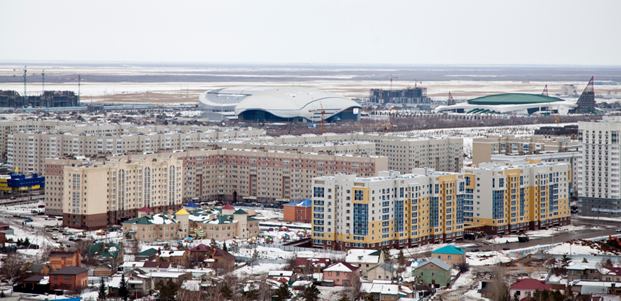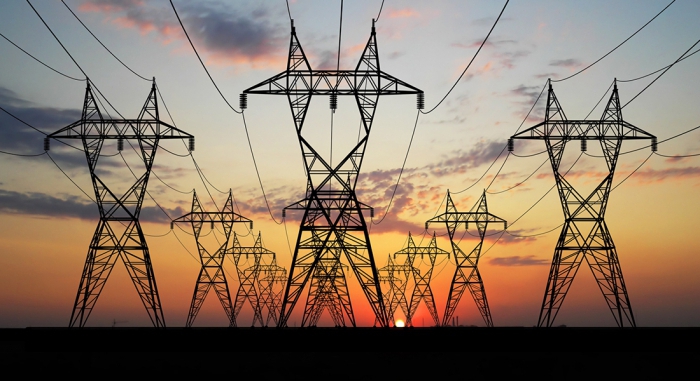Activities to create comfortable living conditions for the population of apartment buildings and other houses (water supply, sewage, electricity, gas and heating) are housing and communal services. What is on their list and what requirements they must meet is vital information for consumers.
New rules
In 2012, new rules were introduced related to the provision of services in the field of public utilities. The Decree on the procedure for their provision provides an accurate definition of utilities. The executors of KU are legal entities or individual entrepreneurs. They acquire resources, carry out work and are responsible for the health of all house communications. The population of apartment buildings and other residential buildings faced with a number of conditions prescribed in the 2nd section of the new rules. Use KU in the right:
- homeowners with their families;
- persons who received housing from a cooperative organization;
- tenants of premises;
- persons who rented an apartment or room.

What is included in the concept of "utilities"? These are the following benefits: electricity, water drainage, access to hot and cold water and others. According to the rules, they are served continuously, and heating - round the clock during the season. In the LCD household, accidents and irregular supply of heat or water are possible, but within the framework of strictly regulated norms related to the quality of the boiler.
What is included in the list of utilities?
The services included in the utility list are presented in the table below.
|
Submission is carried out to supply residents around the clock on a central or intra-house network. Adequate quality, volume necessary for vital needs are the main requirements for water. In the absence of a water supply system, the supply is carried out to the street column. |
|
Served around the clock through centralized networks for all areas of the house in order to provide consumers. |
|
What is included in municipal wastewater disposal services? Drainage is carried out around the clock through centralized networks and intra-house systems. Sewer systems should be present in most residential areas of the house. |
|
Electricity is uninterrupted, it is supplied round-the-clock to houses and apartments through the power supply network in the required volume. |
|
Gas is supplied round-the-clock to homes and apartments through gas supply networks. The supply includes the sale of gas cylinders. |
|
Centralized networks and heat supply systems supply thermal energy to homes, apartments, non-residential premises to maintain the proper temperature. |
The list of what is included in utilities depends on the level of home improvement. If there is no sewage in the living room, then it should not be counted as KU.

Housing Services
Any consumer, studying receipts for accommodation, pays attention to consumables related to common housing needs. These are housing services. What is included in the utility costs of this area? What does the consumer pay for? Living in apartments, unlike residents of private houses, pay the following costs arising from the maintenance of property that is public:
- Lighting, maintaining optimal temperature according to legal rules.
- Cleaning, cleaning, the creation of sanitation for public buildings and areas within the house.
- Costs of dumping and transportation of waste (solid, liquid).Organizations and entrepreneurs located in a residential building are also required to pay these costs.
- Fire safety.
- Maintenance with landscaping and land improvement, which is part of the property of the house.
- Repair costs (capital and current).
- Activities to prepare for the seasonal operation of the house.
- The cost of maintaining public property.
- Activities for the inspection of common areas.

About the provision of utilities power supply
According to the rules that came into force in 2012, the changes affected the order of electricity supply. In some cases, enterprises supplying electricity to houses may be executors of KU. What is included in utility services for electricity supply?
First, resource-supplying organizations are not required to service the internal electrical system, are not responsible for the level of its quality inside the house. Secondly, they are responsible only for the proper provision of the service to the borders dividing the elements of the system.
The new requirements include the consumer’s right to take readings every month from the 23rd to the 25th day and transfer them to the energy sales organization until the 26th day of the same month. If no data have been received, Energosbyt has the right to calculate the volume of consumption by standards. The consumer should enable representatives of Energosbyt to check the condition of the devices and the accuracy of the data.

Everyone knows that it is forbidden to hurt the seals, remove the counters, interfere with their work, so that the meter does not “wind up”. Such actions will lead to the fact that the payment will increase significantly: they will accrue a “kulibin” taking into account the power of the devices for their round-the-clock operation for all residents.
The changes also affected the procedure for calculating the volumes of provided communal electricity. It is paid separately as part of KU, monthly. So, if you went on vacation, do not live in an apartment or are absent for other reasons, then you are still obligated to pay for the general house electricity consumption during this time. The volume of communal KU is calculated and divided between residents taking into account the area occupied by each. In the absence of a common house meter, the calculation is based on standards. They are different for each region, but are developed according to the general methodology. In addition, the organization that supplies the light has the right to turn it off from a tenant who owes three months of consumption. The absence of a counter will not play any role.
New Standards
In 2013, changes were approved regarding the rules for providing KU. What is included in the concept of “utility bills”? How is it calculated under the new rules? Payment KU (except for heating) is divided into personal and communal and signs separately on the receipt.
Innovations also touched regulatory ratios. They should “push” the population of apartment buildings to install individual meters. For those who have the technical capabilities to supply devices that conduct house-building and individual metering, but have not done so, increased standards have been introduced for all types of KU. For example, after the new year, payment increased by 10%, after six months - another 10%, and so on, until the excess reaches 60%! As a result, those who do not install meters will have to pay 60% more in two years from those who did it.
The advantage in this situation is that this overpayment for the asset must be spent by the managing organization on energy saving and improving the efficiency of energy systems. The question arises regarding the president’s demand not to allow an increase in the value of commercial assets above 6% per year. How will this instruction be carried out for those living in apartments and houses without meters?
The procedure for payment of common housekeeping units
The new Rules for the provision of utility services contain an amended formula for calculating heating standards. In the old version, the total heat energy consumption was divided into the total squares of the premises (residential + non-residential + public). The new version is divided into the total squares of residential and non-residential premises without common areas.Thus, the standard has increased.
I am glad that the residents were charged for common heating costs. Now, residents will not have to pay for heating the entrance, where there are no batteries. KU and water disposal were also excluded from the general house standards: there is no need to pay for the discharge of water that was watered by lawns. General house-based metering of hot and cold water, the new rules for the provision of utility services are proposed to be calculated taking into account the norms: 90 liters per person per month.
Organizations managing KU are now motivated to reduce common house losses. The volume of services on them should be within the standard, if it nevertheless exceeded, the difference is paid by the management company itself, and not by consumers. The exception is at home, where at the meeting of the owners it was decided to divide the excess between the tenants. If the contractor is not a company, but a resource provider, then the difference is divided between consumers, taking into account the areas belonging to them.
How to establish the fact of improper provision of KU?
What should I do if there are no bulbs in the entrance for several days or window panes are knocked out? If KU is provided poorly, and there is no way to call the contractor or he does not respond, then the consumer can establish a violation of his rights. A tenant draws up an act with the participation of two neighbors and the chairman of the HOA (house council). The period of improper provision of KU will be considered from the moment of signing the act (an example is given below).
| Act
improper utilities |
| 02/28/2015
Vereshchagino city, st. Postal, house 34, apt. 2 start of compilation "10-30" the end of compilation "11-00" Prepared by a commission consisting of: Chairman of the HOA Petrov S.S., apt. Number 25. Members of the commission: A. Maslyakov, apt. Number 36. Starkova T.I., apt. Number 40. This act is drawn up in connection with the improper provision of heat supply services, leakage of heating pipes. Compiled on 09/03/2014. The act noted that the system is in working condition. During a visual inspection, leakage of pipes and a radiator was found in the second entrance on the third floor. Conclusion: the violation is associated with wear on the radiator. The Commission decided on the need to set off the amounts paid for the repair of the heating system. Captions |
What to do if public utilities do not organize cleaning of the local area for months or do not carry out repair work in the entrances? After all, this is also utilities. What is included in measures to protect the rights of residents?
- Preparation of a collective claim with the name, address and signature of all residents to the management company. The main requirement is the elimination of service deficiencies in a reasonable period.
- Personal and written appeal to the Housing and Public Utilities Administration of a city or district. In writing, list the shortcomings in the provision of KU and ask to take measures to eliminate them, to bring the perpetrators to justice.
- If the first and second steps have not yielded results, file a lawsuit in court.
Contract for the provision of KU
KU are provided under a written reimbursement agreement with provisions on the procedure for their provision under the new rules. He must take into account the provisions of the Rules and contain the necessary conditions governing utilities. What is included in the contract, what is the procedure for its conclusion?
The organization providing the KU has the right to conclude a written contract if the tenant already uses the KU or intends to consume them. An agreement with the provisions on the provision of services in the performance of these actions by the consumer is considered concluded. The rules set a time period in which the contractor must provide services and require payment.
With any form of ownership, the managing organization must provide the necessary KU and cannot refuse to include in the contractual obligations the provision of services that allow providing the level of home improvement.
For tenants, tenants drawn up a contract of employment or lease. If the written contract does not comply with these innovations, then it is still considered that it was concluded according to new requirements and taking into account all their conditions.If the consumer does not have a contract on paper, the managing organization or the supplier does not have the right to refuse to provide services.

Six Ways to Reduce Your Rent
How to find out what is included in utilities, and where to go in order to protect your rights? With a few steps, you can reduce KU costs and affect utilities:
- An official request for your tariffs separately by expense item will help you to see what is included in utilities, what you have to pay for and what services you do not receive in full.
- In order to draw up an act for services not provided within a month, it is necessary to invite an employee of the housing cooperative of his management company. The act must be prepared before the 20th day of the current month.
- Together with an employee of the housing cooperative (or without him) to draw up an act of claim. Collect signatures of residents (the more the better).
- In the first days of the month, submit an application to the Housing Authority for the recalculation of payment of KU, acts must be attached.
- If utilities refuse to recalculate - file a complaint with the Directorate for the Protection of the Rights of Consumers of the Territory, Region or the Housing and Public Utilities Department of the city.
- In addition, the consumer has the right to refuse such services as stairwell cleaning.
Conclusion
Innovations in the order of rendering KU were made so that their receipt became simple and transparent. In general, they streamline the relationship of the population with housing and communal services. But there are a number of ambiguities in the new rules. Whether this reform will be effective will become known over time.








